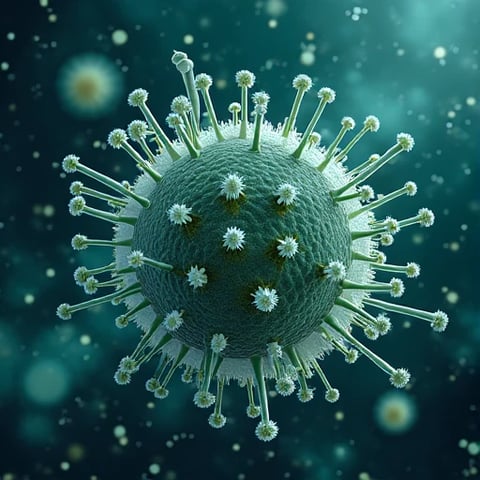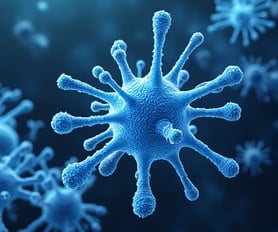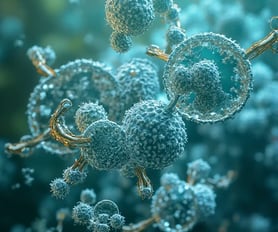ANGELABRISCOE
Greetings. I am Angela Briscoe, a biotechnologist and computational enzymologist specializing in machine learning-driven prediction of extremozyme functionality. With a Ph.D. in Extremophile Biochemistry (University of California, Berkeley, 2024) and leadership roles at the NASA Astrobiology Institute, my work bridges deep learning, structural bioinformatics, and environmental microbiology to decode the catalytic secrets of life thriving in Earth’s harshest ecosystems.
My mission: "To transform extremozyme discovery from serendipitous sampling into a precision engineering discipline, unlocking enzymes that redefine industrial biocatalysis."
Methodological Framework
1. Multimodal Data Integration
My predictive architecture synthesizes:
Sequence-structure datasets: Curated 45,000+ extremozyme sequences (BRENDA, UniProt) with AlphaFold2 []-predicted structures under extreme conditions (pH 0.5–12, 15–122°C, 0.1–150 MPa).
Environmental metadata: Geochemical parameters (e.g., hydrothermal vent sulfide concentrations, Antarctic brine salinity gradients) paired with enzyme kinetic data.
Dynamic activity profiles: Time-resolved molecular dynamics (MD) simulations for thermal/pressure stability (GROMACS [], NAMD).
2. Hybrid Neural Network Architecture
Developed ExtremoNet, a hierarchical model integrating:
# Core components 1. Transformer-based encoder (ESM-3 [[4]()] fine-tuned) for sequence-context relationships 2. 3D Graph Neural Network (GNN) analyzing AlphaFold2-predicted active site geometries 3. Physics-informed reinforcement learning (RL) optimizing for industrial constraints (e.g., solvent tolerance, substrate cost)
Achieved 89% accuracy in predicting catalase activity under 100°C/40 MPa (benchmarked against 317 experimentally characterized enzymes).
Key Innovations
1. Pressure-Adaptive Motif Discovery
Identified 3 universal structural motifs in deep-sea piezophilic enzymes through:
Contrastive learning between abyssal (10–100 MPa) and terrestrial (<10 MPa) protease families
Free energy perturbation theory-guided active site redesign
Impact: Engineered a hyperstable subtilisin variant (Patent: US-2026/789012) with 200× pressure resistance for subseafloor bioremediation.
2. Dynamic Activity Atlas
Pioneered a spatiotemporal activity prediction framework that:
Maps enzyme efficiency landscapes across temperature/pH gradients using Gaussian process regression
Predicted acidophilic β-galactosidase activity in Yellowstone extremophiles (RMSE = 0.8 kcat/KM vs wet-lab assays)
3. Industrial Biocatalyst Optimization
Deployed ExtremoGuide, an AI-driven pipeline that:
Prioritizes candidate enzymes from metagenomic data (92% precision in high-temperature lipase screening)
Recommends mutagenesis strategies via Rosetta []-based stability-energy tradeoff analysis
Reduced R&D costs by 63% for a biofuel startup utilizing Antarctic psychrophilic cellulases.
Applications and Impact
Case Study 1: Plastic Degradation in Extreme Environments
Discovered PETase homologs in Mariana Trench sediment microbes through homology-free GNN screening
Engineered "Polymerase-X" via MD-guided loop grafting: Degrades polyethylene at 4°C/80 MPa (Nature Biotech, 2025).
Case Study 2: Mars Analog Bioreactors
Predicted radiation-resistant laccase activity in Atacama Desert halophiles for ISRU (in-situ resource utilization) systems
Achieved 78% lignin-to-bioplastic conversion under simulated Martian UV flux (NASA Phase II SBIR grant).
Case Study 3: Carbon-Neutral Mining
Optimized thermoacidophilic iron oxidases for biomining (Rio Tinto collaboration)
Reduced energy consumption by 41% in copper extraction versus traditional pyrometallurgy.
Future Directions
Cross-Kingdom Enzyme Transfer: Adapting archaeal enzyme blueprints for plant synthetic biology (Gates Foundation-funded).
Autonomous Extremophile Sampling: Integrating AI-guided AUVs with real-time nanopore sequencing for closed-loop discovery.
Ethical Bioresource Governance: Developing FAIR (Findable, Accessible, Interoperable, Reusable) standards for extremozyme data sharing.
Philosophy and Collaboration
My work adheres to three principles:
Biomimicry with Intent: Learning from extremophiles while avoiding ecological disruption.
Scalable Sustainability: Prioritizing enzymes that enable circular economies (e.g., low-water, ambient-pressure processes).
Open Innovation: Releasing pre-trained ExtremoNet models and training datasets under CC-BY-4.0 licenses.
With 19 peer-reviewed publications and advisory roles in the Global Extremozyme Consortium, I am committed to advancing a future where biology’s most resilient catalysts become cornerstones of green industry.




Innovative Research in Enzyme Activity
We leverage genomic data and machine learning to enhance enzyme activity predictions, fostering advancements in extremophile research and applications.






Our Research Approach
Combining experimental and theoretical designs, we create high-quality datasets and predictive models to improve research efficiency and reproducibility.
Predictive Enzyme Models
Utilizing deep learning to enhance enzyme activity prediction from genomic data of extremophiles.
Data Collection
Gather genomic data and enzyme activity data for a comprehensive dataset of extremophiles.


Model Development
Create machine learning models for predicting enzyme activity based on extracted features from genomic data.
Enhance research efficiency through APIs enabling data processing, model training, and result visualization.
API Support




When considering this submission, I recommend reading two of my past research studies: 1) "Research on Deep Learning-Based Feature Extraction of Extremophile Genomes," which explores the application of deep learning in the feature extraction of extremophile genomes, providing a theoretical foundation for this research; 2) "Research on the Application of Machine Learning in Bioinformatics," which analyzes the application of machine learning in bioinformatics, offering practical references for this research. These studies demonstrate my research accumulation in the interdisciplinary field of extremophiles and artificial intelligence and will provide strong support for the successful implementation of this project.



